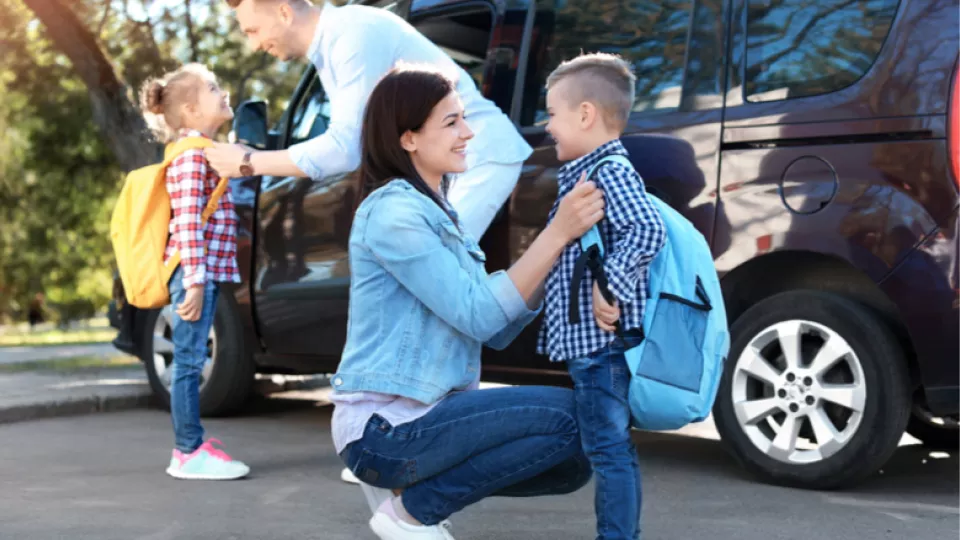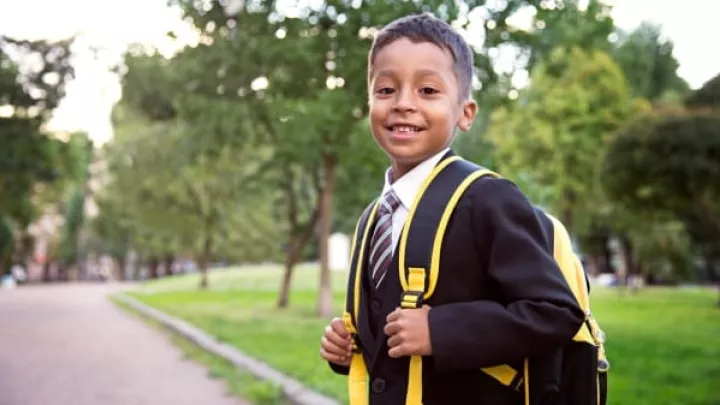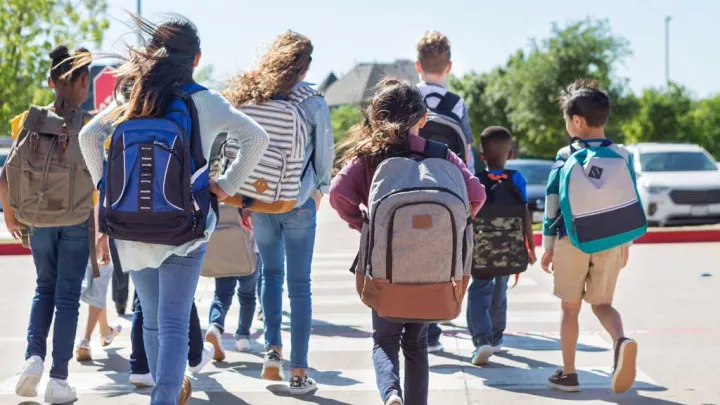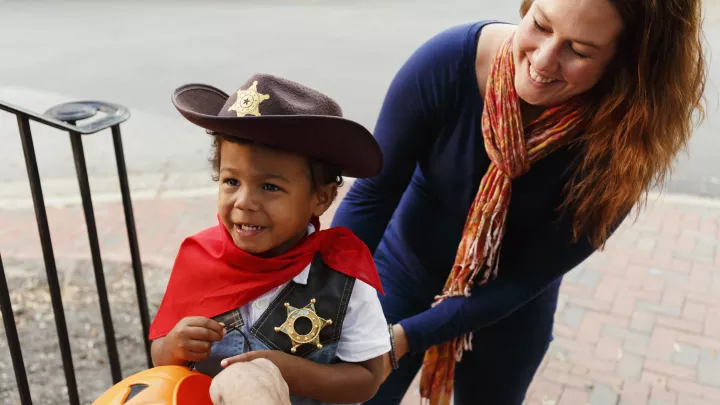
Back to School Hygiene, Vaccinations, Snoring and Safety
Sharpened pencils: check; notebooks and paper: check; school schedule: check. As a parent, this check list may seem familiar to you. It is a clear indication that back-to-school season is here and that means preparing your child for the school year as best as you can.
Update Your Child’s Vaccinations
Vaccination is key to your child’s health. Vaccinations have greatly reduced the number of hospitalizations, disabilities, and deaths due to infections such as measles, whooping cough, and chickenpox. Just this past year, the California Department of Public Health reported a large increase in measles and whooping cough cases. “Although these diseases are vaccine-preventable, they continue to circulate worldwide and cause infections in unimmunized children here in the United States,” says Jeffery Bender, MD, a Children’s Hospital Los Angeles infectious diseases specialist. “It is very important that children receive and update their vaccines for the well-being of themselves and others.” To see a list of recommended vaccinations for different age groups, the American Academy of Pediatricians (AAP) offers parents an& online immunization schedule.
Hygiene
As your child heads back to school, they will be interacting with more children than they have been at home. This translates into your child being exposed to different germs—increasing the risk of bringing home an infection or being infected themselves. James Stein, MD, associate chief of Surgery and chief medical quality officer at Children’s Hospital Los Angeles explains that it is never too early to teach your child about the importance of washing their hands. To reduce the spreading of germs, kids should wash their hands at school at the following times: To teach children how to properly wash their hands, check out this infographic.
Before lunch and break times.
After using the toilet; coughing sneezing, or blowing their nose; playing outside in the playground; touching or handling pets; and whenever hands have touched a dirty surface or look dirty.
Baseline Concussion Evaluations
For those with children in school sports activities, parents should consider baseline concussion evaluations conducted by a health care provider trained in concussion evaluation and management at the start of each season. Bianca Edison, MD, MS, attending physician in the Jackie and Gene Autry Orthopedic Center at CHLA, “These evaluations should be a part of every athlete’s pre-participation sports physical.” Such evaluations include a thorough medical and concussion history as well as a clinical exam to assess the athlete’s balance and brain function (memory skills, concentration and problem solving). Results from the baseline evaluation can be compared to a similar exam during the season in the setting of a suspected concussion and help inform your child’s clinician whether it is safe to return to school and play. “Concussion evaluations are invaluable in that they allow for an educative opportunity for both the athlete and family involved, information on concussion recognition, safe return to school and play, tips on recovery, warning signs for emergent care and future risk factors can all be addressed in this setting,” continues Edison. For more information on concussions, Tracy Zaslow, MD, director of the Sports Medicine Concussion Program at Children’s Hospital Los Angeles explains. Further information can be found at AMSSM position statement on concussion in sport and International Consensus statement on Concussion in Sport.
Stress-Free Mornings
There isn’t really a magical solution to having mornings run smoothly, but finding ways to help a child feel invested in getting ready on time might come close. Karen Rogers, PhD, program area leader of the Project Heal Program at Children’s Hospital Los Angeles has a few suggestions on how mornings can run smoother throughout the school year:
Have a routine. Let your child know which steps need to be completed and by when. Consider posting a list of morning jobs, such as eating breakfast and brushing their teeth, so they can be more independent.
Use lots of praise and encouragement. This helps your child know exactly what they did that worked, to feel good about their self and to remember to do the same thing tomorrow.
Set a good example. The model you provide for your child is one of your best teaching tools. For example, think out loud for your child to hear, “Now that I had breakfast, I need to brush my teeth.”
Start the night before. Review any changes to the schedule for the next day. Make sure backpacks are ready with signed permission slips, completed homework assignments, clothes are put on and snacks and lunches are prepared to be packed up.
Asthma and Allergy Action Plans for Teachers and School Nurses
One out of five Americans is impacted with asthma and allergies and according to the Centers for Disease Control and Prevention (CDC) food allergies in children have increased 50 percent from 1997 to 2011. It is important to work with your child’s doctor or nurse to prepare an action plan for any health issues your child may encounter. “Children with allergies or asthma may need special accommodations in their food or treatment to maintain normal activity levels,” says Ronald Ferdman, MD, pediatric asthma and allergy specialist at Children’s Hospital Los Angeles. “Review any medical records or prescription information with the school nurse or teachers to ensure proper dosage and care.” Equipped with the knowledge of how your child’s asthma or allergies are triggered, you can take preventive measures, such as knowing the symptoms that precede a reaction. Download a copy of an Asthma Action Plan or Food Allergy Action Plan (Anaphylaxis Plan).
Getting to School Safely
Walking and biking to school is a fun and healthy activity, but children need to be safe while doing it. “Before starting school, parents should help their child pick and practice a safe route to school and to remind children to avoid taking shortcuts, never take rides from strangers, watch for cars whenever crossing a crosswalk and to always remain visible by carrying a flashlight or wearing reflective gear,” says Helen Arbogast, MPH, CHES, manager of the Injury Prevention Program at Children’s Hospital Los Angeles. “For those riding bicycles, it is important that children always wear their helmet, to look out for cars, ride with the flow of traffic, wear reflective gear and parents must check if their child’s bike is in safe riding condition.” Children who have cell phones and other electronic devices should be taught to use them responsibly. Avoid using devices while walking. Distractions can cause pedestrians serious injuries. For more tips, CHLA’s LA Street Smarts Program uses a creative, interactive experience to educate children on pedestrian safety and our RN Remedies blogger, Robert Giesler, BSN, RN, RNC-NIC, RRT, CPST provides more on bike safety.
Playground Safety
According to the U.S. Consumer Product Safety Commission, more than 200,000 children visit the hospital emergency room each year with playground-related injuries. A great way to avoid these injuries is to teach children safe playground behaviors at home or in a public park before they start the school year. “Always evaluate your child’s behaviors around others and make sure that they follow the playground rules,” says Helen Arbogast, MPH, CHES, manager of the Injury Prevention Program at Children’s Hospital Los Angeles. “Children tend to increase risk by using equipment intended for older children and by improperly using equipment, such as sliding down equipment backwards or jumping off monkey bars. Be sure to immediately stop that behavior to avoid a trip to the emergency room.” It is also critical for parents to actively supervise children whenever possible during play at home and school; there is no substitution for adult supervision.
Staying Active
Back to school means a big change in schedules for kids. Children, who may have had the chance to run, play and swim every day, will now be spending more time sitting in class and doing homework. Therefore, it is up to parents to remind their kids of the importance of regular physical activity to maintain a healthy mind and body. We recommend the following to keep kids active: Exercise can also improve mental performance. Taking a break to get some exercise can allow students to get back to their work with an open mind and a better attitude.
Join a sport. When kids are involved in a regular sport or physical activity, exercise doesn’t feel like a chore. Find something your child wants to do as they are much more likely to stick with it and get their needed exercise.
Model good health. When kids see their parents exercising, they learn the importance of healthy activity much better than when they are told about it. This can also make you healthier and happier as well!
Be active together. Between school, extracurricular activities, digital media and friends, kids have a lot more on their minds nowadays. Taking a walk together as a family in the evening can be a great time to distress and talk about important things without distractions. Hiking or biking together on the weekend can be a great bonding experience and refresh the mind and body for the week ahead.
Annual Eye Screenings and Full Diagnostic Hearing Test
Most of the sensory information that is vital to children’s development comes through the senses of vision and hearing. Children with undetected hearing loss or poor vision are often misdiagnosed with a learning disability or can lead to a longer learning curve, speech and language delays and even behavioral problems. This is why a comprehensive vision exam and hearing test for your child should be routine as a normal physical or check-up before school starts. “As a parent, it is important to ensure that your child’s vision is at its best,” says Mark Borchert, MD, a pediatric ophthalmologist in The Vision Center at Children’s Hospital Los Angeles. “Good eyesight is a fundamental part of learning in the classroom. Parents should monitor symptoms and signs of vision problems throughout the school year, especially because eye sight changes as children grow older.” Victoria Mena, AuD, pediatric audiologist at Children’s Hospital Los Angeles also adds, “In order to maximize your child’s communication and learning, it is important to rule out any issues in regards to hearing. While school hearing screenings do help in the identification of potential hearing loss, it is only through a comprehensive diagnostic hearing evaluation that true hearing status for both ears can be determined.”
Is Your Child Snoring at Night?
The hesitancy to wake-up in children transitioning from late summer nights to earlier wake-up calls for school is normal. However, if your child is getting the recommended eight to 10 hours of sleep per night and still exhibiting signs of sleepiness, Sally L. Davidson Ward, MD, head of the division of Pediatric Pulmonology and medical director of the Sleep Center at Children’s Hospital Los Angeles, recommends checking to see if your child is frequently snoring at night. Many children snore on occasion and according to the Sleep Foundation, an estimated 10 percent of children snore on most nights, but, loud and regular nightly snoring in healthy children is often abnormal and can point to respiratory issues. “Snoring can be a sign of sleep apnea and other breathing difficulties,” says Ward. “Even brief moments of labored or absent breaths can disrupt a child’s sleep cycle and may impact attention and learning while in school.”


